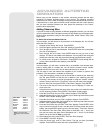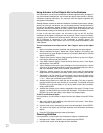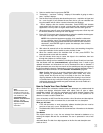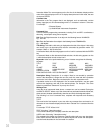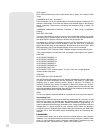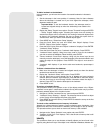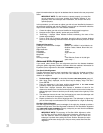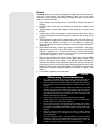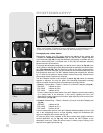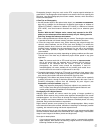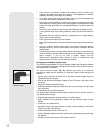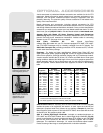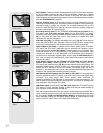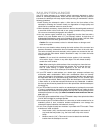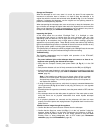
39
Browse
This menu allows you to search the database for objects with certain parameters,
much like a search engine. The "Edit Parameters" option lets you set various
parameters for the search and "Start Search" activates the search. A typical search
might be performed as follows:
1. Select "Browse" from the Object menu. Press ENTER. "Browse: Start Search"
displays.
2. Press one of the Scroll Keys and "Browse: Edit Parameters" displays. Press
ENTER.
3. "Edit Parameters: Largest (mins)" displays. "Mins" stands for arc-minutes. Press
ENTER.
4. "Largest (mins)" and a value displays. Using the Number keys, enter a size in
arc-minutes. Autostar will search for objects
up to this size and no larger. Press
ENTER.
5. "Edit Parameters: Largest (mins)" displays again. Press the Scroll Down key.
"Edit Parameters: Smallest (mins)" displays. Enter the value for the smallest size
of an object that Autostar will search for in the database. Continue with
"Brightest," Faintest," and "Minimum Elevation," using the procedure described in
steps 3 and 4.
6. After "Minimum Elevation," "Object Type" displays. Press ENTER." "+Black Hole"
displays.If you do
not wish to have "Black Holes" in your search, press ENTER
and the "+" changes to a "–." Press the Scroll Down to scroll to the next item.
"+Diffuse Nebula" displays. Continue to scroll through the list and press ENTER
if you wish to change the "+" to a "–" or vice-versa.
7. After you have scrolled to the last item on the "Object Type" list, press MODE
twice and the Scroll Down key once. "Browse: Start Search" displays. Press
ENTER. "Start Search: Next" displays. Press ENTER. Autostar searches the
database and displays the first object that matches the search parameters you
have entered. Use the scroll keys to display information about the object. Press
MODE and "Start Search: Next" displays again. Press ENTER and the next item
matching the parameters displays. Repeat this procedure to display all the
objects.
8. Press MODE repeatedly to leave this menu.
ETX TIPS
Observing Considerations
• Try to pick an observing site away from street and house lights and car
headlights. While this is not always possible, the darker the site, the better.
• Give your eyes about ten minutes to adjust to the darkness before observing.
Give your eyes a rest from observing every ten or fifteen minutes to relieve
eyestrain.
• Try not to use a standard flashlight. Experienced observers use red LED
flashlights, the red utility light on the Autostar handbox or tape red cellophane
over their flashlights to use for setup and map reading so they don’t have to
continually readjust their eyes to the darkness. Be careful not to shine bright
lights if there are other observers in the area. Do not shine a flashlight into the
telescope while someone is observing!
• Dress warmly. It gets chilly when you’re sitting for prolonged periods.
• Practice setting up your equipment during the day or in a lighted area to
become familiar with it before going to a dark site.
• Use your 26mm eyepiece to view terrestrial objects and wider areas of space,
such as open star clusters. Use optional higher power eyepieces, such as a
9mm eyepiece (see
OPTIONAL ACCESSORIES, page 43 for more details), when
you wish to view something up close, such as craters on the Moon or the rings
of Saturn.
• Bring your instructions manual along with you when you observe. Become
familiar with its layout, so it will be easier for you to look up information with
just a (red) flashlight.
• Invite your friends and family to come and observe with you. But practice
locating 3 or 4 objects to show them beforehand; if you have long delays, they
will become bored and lose interest. Also, demonstrate how to focus the
telescope in a well-lit area before you go to to the observing site.



